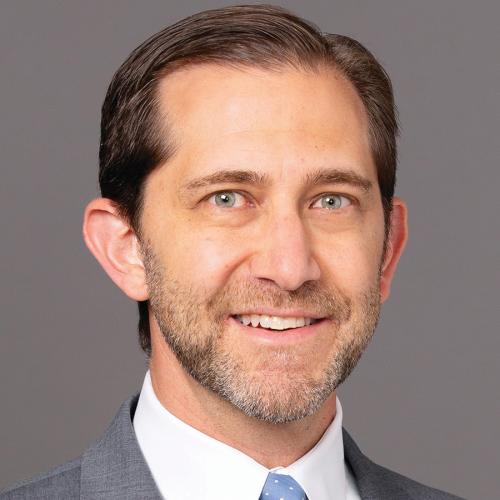
Emphasizing the ‘E’ in ESG

Commercial real estate is finding out just how essential ESG — environmental, social, and corporate governance — policies can be. Tenants are looking for sustainability while various levels of government are passing regulations to boost green building practices. In the ultra-competitive world of CRE, an environmentally conscious approach can help separate one asset from another.
David Amerikaner, special counsel with Duane Morris’s Real Estate Practice Group, focuses on sustainability, land use, project development, and environmental law. He details what commercial real estate is doing in the ESG arena, while also discussing how tenant demand for sustainable practices and shortening ROI on green investment are changing the equation for developers and owners.
CIRE: While COVID-19 doesn’t seem to be done with us for a bit, can you highlight some permanent impacts the pandemic will have in commercial real estate’s approach to ESG?
David Amerikaner: As we know, COVID-19 has been a huge disruptor in every sense and in every segment of commercial real estate. In the office market, in particular, we’ve seen companies look to downsize and question their need for as much permanent office space or permanent office space at all. We’ve seen this make the office market more competitive than ever. And as landlords compete for tenants, the commitment to ESG, from the perspective of the building owner or landlord, can be a distinguishing factor. First, I want to distinguish what we’re talking about here. Mostly, it’s the “E” in ESG. “Environmental” includes the built environment and its materials, the carbon they emit, water usage, waste, energy usage, and third-party certification of various ESG-focused attributes, liked Energy Star and LEED certification. The social aspect — including pro bono work, community involvement, philanthropy, and diversity — is very important. The governance aspect is also key — including initiatives like ethics, codes of conduct, insider trading policies, and succession planning — but I’m especially focused on the environmental issues in ESG.
CIRE: Speaking of the office market, considering the growing competition with the disruption of COVID-19, how can building owners and operators justify the capital expenditure in ESG when the market is so cutthroat?
Amerikaner: As we see tenants screening for ESG factors, we see investors increasingly screen for sustainability issues. Commercial landlords are prioritizing sustainability more than ever. So when you ask about justifying the cost, in the last few years, the payback period for a lot of investments is relatively short. Green building projects can be as simple as improving lighting and adding automatic switching for climate control. You can get a payback in as little as one to three years. Obviously, there are investments that require a much longer period to recoup your investment, but affordable financing is an option in many cases. We’re seeing more and more landlords realize this. Because of the importance placed on these actions by investors and tenants, many people are thinking it’s worth it.
It’s becoming vital in the capital markets, where people are finding that they have no choice on the demand side of the market. In residential, home buyers are seeking sustainability, but on the supply side, the access to affordable capital depends more than ever on robust reporting of ESG metrics and a measurable commitment to reducing pollution and water use.
CIRE: In addition to the challenges related to COVID-19 for developers, owners, and investors, have these people become more willing or more able to invest in green initiatives?
Amerikaner: The market has been tight in many sectors. But like I said, the payback periods for sustainability projects can be shorter than initially expected. Even in existing buildings, the savings that can be realized on utility bills from some retrofits can be quick. Additionally, in many places, carbon reduction mandates are becoming law. I’m thinking specifically about New York, which is in the process of implementing its local law 97, which covers buildings that are 25,000 sf or larger. It imposes mandatory greenhouse gas (GHG) emission reduction requirements that kick in starting in 2024 — all in service of a goal to reduce emissions from the building sector. The city’s goals are to reduce GHG emission by 40 percent by 2030 and 80 percent by 2050 against a 2005 baseline. Similar initiatives are happening in Boston, Seattle, and other cities across the country. So whether it’s voluntary or mandated, building owners and landlords are finding that this is something they need to reckon with. Once they do, they’re seeing benefits that they may not have anticipated when they started.
CIRE: What has shortened the timelines for developers and building owners to see a quicker ROI on green investments?
Amerikaner: Decreasing costs is a factor. Look at things like solar panels, which have become more affordable — the supply chain issues of the last year or two notwithstanding. Some of these things are fairly easy to do. If you install LED lights, for instance, that’s a relatively simple way to substantially reduce your energy bills. If you have vacancy controls in individual offices, you can have the lights turn off and the climate control set to be smart about heating and cooling. But even for more complex projects with longer payback periods, affordable financing and tax incentives are available to help reduce the cost. For any commercial real estate investment, it may be a longer hold. But these things we’re discussing position a building to be more attractive to both tenants and investors.
Also, in places like New York, legislation has addressed new building being encouraged to install solar panels or other green features on roofs to improve energy efficiency, reduce water waste, and reduce energy consumption. That’s one easy way for cities to improve the efficiency of their buildings and reduce carbon emissions if you have distributed energy generation as well as a reduced strain on the water supply.
CIRE: Looking at other sectors beyond office, is there a CRE market that has been especially successful in its efforts to boost sustainability?
Amerikaner: I would say that anything new is what’s been most successful. It’s easiest to implement green practices from the ground up. We’re seeing many major homebuilders really put themselves out there as focusing on energy efficiency, carbon reduction, and water efficiency. We’re seeing strong efforts in sustainability in the multifamily sector that are being well received by the market.
But from the tenant side of the equation, a lot of commercial tenants have ESG goals of their own. They have published goals that they need to meet in the short, medium, and long term — goals related to energy efficiency of the spaces they occupy, water use in those spaces, use of recycled materials, carbon recovery, and emission reduction. So when a prospective tenant is looking for a space, they will be looking to advance their own published ESG goals. Because of this, tenants are certainly willing to pay a bit more for that. On the countervailing side of that, though, the market is very competitive, particularly for commercial tenants, but many are still prioritizing a commitment to sustainability.
CIRE: Moving forward, what obstacles will continue to be concerning for CRE adopting and implementing green practices?
Amerikaner: Obviously, we hope to see as much progress as possible — and the trend is undeniably in the direction of greater sustainability, more investment in green practices, retrofits, and distributed energy generation. In terms of obstacles, cost is No. 1 when you’re asking a commercial property developer or owner to make an investment. Something that can be an expensive proposition is always an obstacle. Communicating how short these payback periods can be for some investments will be crucial in convincing CRE developers and investors. We’ve seen resistance to solar and wind energy in some areas of the country, but as the costs continue to decrease, it’s harder to remain opposed. The market decides in many cases.
Another risk would be the temporary status of government incentives — some tax incentive programs will expire, so they require an extension. Lastly, the supply chain is an area of concern. We’ve seen a tremendous amount of disruption in the global supply chain over the last year or two from COVID-19. As these issues continue to get worked out, this will aid in the implementation of green technologies. But right now, there are problems because it’s simply harder and more expensive to import components needed to implement some of these technologies.
CIRE: As momentum continues to build for ESG practices, where do you see sustainability and green building practices in three or five years?
Amerikaner: I see them continuing to be an integral part of the industry — and they will become increasingly visible to investors, tenants, and other stakeholders. We see that companies are now setting goals and advertising their success when meeting them. Companies continue to focus on these matters and making their assets and practices more environmentally friendly. I also think we will see more mandates from various levels of government along with more incentives to encourage sustainability in commercial real estate. Whether it’s from city, state, or federal action, there will be more and more encouragement for CRE owners and tenants to make investments in this area.
Editor's note: This article is an adapted excerpt from a full-length Commercial Investment Real Estate
podcast.





